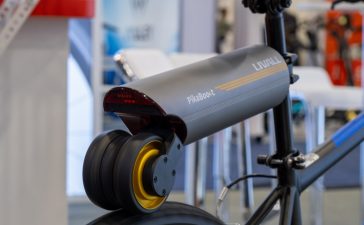When it’s time to replace your users’ aging PCs — or maybe to rationalize your PC fleet after a series of acquisitions — the decision on what PCs to buy doesn’t start with the machines themselves. Instead, several other factors should lead to your eventual decision on which computers to provide your organization’s users.
Three PC makers dominate the market globally: Lenovo has maintained the No. 1 spot for years, with roughly 23% of sales, while HP and Dell Technologies essentially tie for second place with roughly 16% to 20% of sales each (their numbers tend to vary from quarter to quarter), according to IDC’s market data. Apple comes in fourth, but its percentage can vary strongly, usually between 8% and 14%. Asus and Acer typically tie for fifth place, with around 6% to 7% market share.
These figures include PCs sold to individuals and households; IDC and its competitors Gartner and Forrester Research do not track business computers’ market share separately. But analysts at IDC, Gartner, and Forrester agree that Lenovo, HP, and Dell have even larger percentages of the business market. And they’re available in practically every country and territory worldwide, whether directly or through resellers.
It’s no surprise, then, that for the vast majority of enterprises, the bulk of their PC fleet comes from one of these three vendors. But a fraction of their fleet may come from other vendors, something IT needs to strategize as well.
This article explores the multiple considerations IT should assess when choosing its PC fleet suppliers: buying direct vs. using resellers, technology factors in PC choices, user considerations and pressures, when and how to consider thin clients and non-Windows devices, financial and purchasing considerations, support factors, environmental considerations, and geographic factors. (For information about laptop styles, specifications, and components suited to different types of users, see “Buyer’s guide: How to choose the right business laptops.”)
Considerations in sourcing PCs: direct vs. reseller
The most important decision for IT is where to source the PCs from. The standard choices are directly from a PC maker or through a reseller. PC makers typically will sell directly only when several thousand PCs are involved. By contrast, there are resellers who work with large deployments, those who work with medium deployments, and those who work with small deployments.
But there’s usually more to the relationship than who supplies the actual PCs. IT often seeks to offload other parts of the PC portfolio, such as direct user support, repair and replacement services, setup and delivery (especially with the work-from-home trend complicating those logistics), replenishment as PCs age, and data sanitization and takeback or recycling at end of life. Many resellers offer these services in addition to purchasing, but they come in all sizes and specialties, and many still handle only the sales, takeback, and warranty functions.
Another option for very large organizations is to use a managed service provider (MSP) like Accenture or IBM. MSPs are basically outsourcers who take on a piece of your IT operations, in this case managing your PCs. In this approach, the MSP acts as a type of reseller — they’ll get the PCs from the PC maker or a reseller — but managing is their key focus. MSPs handle PC purchasing and management only for organizations with fleets of thousands of PCs.
The mix of services you want and how much you are willing to pay for them will narrow down which PC maker, reseller, or MSP you end up sourcing through. So will the ability of a PC maker, reseller, or MSP to work with other providers, such as if you have a separate security service provider or provide your own help desk support, or if you use specialist providers for nonstandard platforms like Apple macOS and Google Chrome or for business units with special needs like construction or aircraft repair.
PC makers typically sell and support only their own computers (including Windows, ChromeOS, and Linux PCs), whereas resellers and MSPs might support multiple brands of Windows PCs. Resellers and MSPs often support Macs and sometimes Chromebooks and Linux PCs too, says Forrester Research analyst Andrew Hewitt. If your computer portfolio is multiplatform, a reseller or MSP may be a better sourcing fit, if you can find one that meets all your other requirements.
The type of relationship you want also matters, says Gartner analyst Steve Kleynhans. For those who work directly with a PC maker, he notes, “Dell is a bit inflexible and rigid, which is needed for them to scale their business.” By contrast, Lenovo and HP tend to work through resellers or other third parties, which “can have their own approach and level of flexibility.” That can be particularly good if a reseller is experienced with your specific needs or industry, he says. But it does add a layer between you and the PC maker.
Your choice of provider — including the decision of whether and when to use multiple providers — is also shaped by the other considerations covered in this article. But the first step is to define what you want your PC provider to do beyond supplying the computers themselves, says Kleynhans. With those candidates identified, you can narrow the list down based on your other needs and preferences.
(For help locating resellers in your region, see “Finding a reseller” at the end of the story.)
Technology factors in choosing a PC supplier
When choosing which PCs to standardize on, IT shouldn’t start with the PCs themselves. There are very few component differences across PC manufacturers today, and within any particular class of device, the PC makers’ offerings are equal. Those hardware details are no reason to favor one PC maker over another, analysts say. After all, “99% of PC components come from common stock,” says IDC analyst Linn Huang.
“The PC vendors are very similar in what they offer,” agrees Gartner’s Kleynhans. “Switching PC vendors is not going to change your life.”
Regardless of the selected PC maker, IT should focus on buying business-class computers, those that include Intel’s vPro technology. These provide anti-hacking capabilities like pre-boot authentication and hardware hooks for various security tools to detect anomalous behavior at the PC’s chip and firmware levels. vPro has been around for 15 years and is a standard feature in today’s business PCs.
Each PC maker offers monitoring tools for some vPro features, such as for pre-boot authentication and BIOS security, notes Forrester’s Hewitt. Configuration drift detection is another service a PC supplier may offer in such monitoring, adds Gartner’s Kleynhans. But don’t overweight such tools in your vendor selection, he says: “You don’t set your security strategy on a PC vendor. Go to a security provider for that,” and consider PC-maker monitoring tools as supplements.
User considerations in choosing a PC supplier
What IT wants most is simplicity in its PC sourcing, analysts say. That means as few providers as possible to meet enterprise needs, as few model variations as possible, as few engagement models (such as different service packages from resellers or other providers) as possible, and as few platforms as possible.
But what users want is, increasingly, more choice. “Twenty years ago, users had no say in tech. That’s not true anymore,” says IDC’s Huang. He notes that pressure from millennials to go beyond IT’s limited PC inventory caused the number of different device types in business to increase beginning in the mid-2010s.
A 2020 Forrester Research survey shows that 66% of Gen Z users (those born after 1996) want autonomy in device selection at work, as do 65% of millennials (those born between 1981 and 1996). That’s a significant jump from the 53% of Gen Xers (those born between 1965 and 1980) and 45% of Baby Boomers (those born between 1946 and 1964) who want such choice. As millennials and Gen Zers rise in organizations, that pressure for user choice will only increase, says Forrester analyst Hewitt.
In industries where talent is hard to get and retain — such as high technology, engineering, consulting, and finance — that user pressure can outweigh IT preferences. “If you want the best employees and the labor market is tight, IT is not going to stand in the way” through limited computer offerings, says Gartner’s Kleynhans.
So IT has to navigate how to balance its need for simplicity in sourcing and management with users’ desire for greater individuality in the tools they use for work.
That might mean supporting a wider variety of devices such as Macs and 2-in-1 Windows tablet laptops. (For help deciding which types of laptops are best suited to your users, see “Buyer’s guide: How to choose the right business laptops.”) But it can also mean changing the requirements for what constitute the standard set of devices.
For example, performance considerations outweigh pricing within any given model lines, says IDC’s Huang — and that favoring of performance over price has been increasing since the mid-2010s, when they were equally valued. Before 2015, vendors and IT had been moving to lower-cost, “good enough” devices, but as employees began leaving for companies that dangled better equipment, IT started buying up, he says — and continues to do so.
Still, most organizations use a mid-level business-class Windows laptop as its standard PC, which typically costs about $1,200 to $1,500. These are available from the top three PC makers as well as from other established PC makers like Asus, Acer, and Fujitsu.
Executives, as well as sales and marketing staff, typically get premium laptops, which cost around $2,000 to $2,500. These users get the fancy laptops — often Apple MacBook Pros or Microsoft Surface Pros, notes IDC analyst Bryan Ma, because “they look really nice and stand out” — not just as perks but as part of corporate branding. These employees represent the company publicly in client meetings, conferences, and other events, and having a nicely designed computer that stands out from the crowd helps burnish their corporate image, says Gartner’s Kleynhans. The other PC makers also have MacBook-inspired models, but the MacBook and Surface brands have stronger market resonance, so IT typically makes a sourcing exception for such computers.
There may be other specific PC needs, such as ruggedized computers for field workers, workstations for engineering and modeling, or desktop PCs for in-office call centers. All three major PC makers have all such common types of PCs. Panasonic and Fujitsu are known for their ruggedized computers as well.
Considerations in choosing devices beyond standard Windows PCs
Choosing the standard Windows PC models for your computer portfolio is fairly straightforward, as whichever major PC maker you end up with will have the models needed for the standard business use cases you define, as described in the previous section. Your focus will be on what level of storage and RAM to provide for the standard models you choose for business users, executives, and, if applicable, other user types — and of course the price.
But the exceptions to these standard models require more thought, not only as to which to support but also how to source and serve them. Some resellers support multiple computing platforms, not just Windows PCs, but depending on your various criteria and needs, you can easily end up with specialty resellers dedicated to specific specialty platforms, just as many IT organizations have separated out internal IT support along the same divisions to gain deeper expertise, notes Gartner’s Kleynhans.
How to assess the use of thin clients, desktop as a service, and Windows 365
For years, various vendors have proposed providing terminals, instead of PCs, where all the computing and data remained with IT in the data center or, these days, in the cloud. Virtual desktop infrastructure (VDI) and thin clients were the two major approaches offered. But they rarely worked well, largely because first in-office networks and then the internet couldn’t handle the data loads, resulting in latency issues that disrupted performance. Driver issues also made peripheral access, such as to monitors and mice, uncertain. “For all the promises, we never got it,” says IDC’s Huang.
But analysts say it’s time to look at thin-client computing again (called desktop as a service, or DaaS, when delivered via the cloud), even if more maturation is needed in the offerings. “The models are getting better,” says Gartner’s Kleynhans. “For a very long time there were technical problems in remoting in — graphics, audio, latency. The vendors have worked very hard to resolve those issues and mostly resolved them.”
The COVID-19 pandemic reactivated interest in 2020, but IT quickly reversed course because the DaaS products could not handle videoconferencing, he notes. Vendors quickly adapted their technology to support Zoom, Webex, Teams, and so on. “So now it is good enough,” Kleynhans says. Still, “when people start looking at it, it’s expensive — especially when getting it cloud-delivered,” he says, “so the economics will have to change.”
The biggest reason, though, to reconsider DaaS today is Windows 365, says IDC’s Huang. “It’s a whole different ballgame now [even though the] nascent implementation was a kludgy experience.” Windows 365 now runs well and is priced well, he says, and because it runs in an HTML5 browser, the user client device can be almost anything with a decent screen size, keyboard, and mouse or trackpad — a Windows PC, a Mac, an iPad, a Linux PC, or a Chromebook — which broadens the user base and reduces what IT has to deploy. “It’s significantly easier to manage and deploy today,” says Forrester’s Hewitt.
DaaS still has the connectivity hurdle — employees need to have sufficient broadband, which is not yet available in many parts of the world, even in parts of major cities across the developed world. But even if not used as a replacement for a corporate-issued PC, DaaS can be an effective tool during lockdowns when employees can’t some into an office where their equipment is, when company-issued equipment fails and users have only their personal equipment available, for use by temporary contractors, or in other situations when IT can’t or won’t provide physical hardware, Hewitt says.
How to assess IT support for Macs
Apple’s Macintosh is the most common non-Windows computer in business. Although none of the analyst firms break out Mac business adoption separately from total adoption, global estimates range from 3% to 5%. But averages can be misleading: That Mac business adoption is largely concentrated in a few countries like the United States, Japan, Germany, and the United Kingdom, analysts say — all countries with significant consumer adoption of Macs and large concentrations of high tech and creative services firms.
A few companies have standardized on the Mac, mainly tech companies like IBM, Salesforce, and Shopify, as well as creative services firms. More companies — again, typically tech, creative services, and media firms — let users choose between Macs and Windows PCs as their primary computers. Many, like Cisco Systems, SAP, and Wipro, have found that users flocked to the Mac once it became an option, muscling out Windows PC usage, notes IDC’s Huang. Those companies offering Macs as an equal choice alongside Windows PCs tend to be in competitive job markets where offering a Mac helps recruit and retain staff who seek perks and a feeling of being leading-edge.
On the other side of the equation are a small percentage of companies that ban Macs altogether, not wanting to support a different platform and seeing no operational reason to do so.
But most companies allow Macs under specific circumstances to specific user subsets, analysts say:
- As an executive perk and to help the company look modern as a subtle corporate marketing effort by its customer-facing sales and marketing staff. (“If you don’t want to give them a Mac, you give them a Surface,” notes IDC’s Ma.)
- As a software and web development platform, because Macs can be used to develop and test software for Windows, macOS, Linux, iOS, and Android. (Apple’s adoption of its own M-series Apple Silicon chips in fall 2021 instead of Intel’s x86 has thrown a slight curveball to developers. They rely on the two x86 virtualization applications — Parallels Desktop and VMware Fusion Pro — to run Windows and Linux works on the M-series Macs. Parallels was able to rework Desktop to run on the M-series chips in spring 2022, but VMware’s Fusion version for the M-series Macs remains in beta as of fall 2022.)
- As a creative platform, because the Mac was the first mainstream computer to support a graphical interface and so was where the mainstay image editing, illustration, and video applications first became available. Although creative services app powerhouse Adobe Systems long ago ported its apps to Windows, creative staffs stuck to using the Mac because they prefer its user interface and overall design. And some mainstay creative apps, like Apple iMovie, have no equivalent Windows counterparts.
Macs are known for being pricey — there are no $600 models to compete against Windows PCs in the broad consumer PC market. But the price differences are narrower in business cases. For business, the MacBook Pro is the premium model, and the MacBook Air is the broad-base model. They might cost a little more than the equivalent-quality Windows business laptops, but not dramatically so.
Apple’s support of business users has run hot and cold over the years, leaving many IT pros uncertain if they can get the needed support for the Macs they allow. Today, Apple has fairly strong business support, with enterprise AppleCare plans that include on-site and next-day repairs in many markets for businesses with as few as 200 Macs, support from well-known resellers like CDW, support for enterprise Apple IDs (so employees aren’t using personal ones for work), Apple-financed leasing options, and the Apple Business Manager tool for Mac enrollment and management by small businesses.
Apple has strong security in its Mac platform, especially in the M-series Macs. And for a decade, unified endpoint management (UEM) tools — even Microsoft’s Intune — have let IT manage Windows PCs, Macs, iPhones and iPads, and Android devices from a common system.
Of course, even if users prefer Macs and IT is happy to support them, there remains the reality that the application portfolio for macOS is smaller than for Windows, so your business may have apps that require the use of Windows. For example, Microsoft Access, Microsoft PowerBI, Microsoft Visio, Intuit QuickBooks Enterprise, SAS Visual Analytics, and a slew of industry-specific apps have no macOS versions.
And Mac apps may be less capable than their Windows counterpart; Microsoft Excel for Mac, for example, supports fewer advanced formulas than the Windows version, only partially supports data connections to other apps and Office’s Visual Basic for Applications (VBA), and doesn’t support at all Power Pivot or Power Chart — so data analysts, accountants, financial analysts, and CFOs often can’t use the Mac version of Excel.
The move to the cloud and thus browser-based apps has narrowed the app gap with Windows, but a gap still remains.
How to assess IT support for Linux PCs
Linux has a very small base of users, concentrated in development and engineering. But if those users must run Linux apps, you need to provide and support Linux PCs.
Of the top PC makers, Acer, Dell, HP, and Lenovo all sell Linux PCs, so IT can typically rely on the PC maker, MSP, or reseller to provide and support Linux in addition to Windows.
How to assess IT support for Chromebooks
Another niche is Google’s ChromeOS platform. Popular in some countries in elementary school use due to cheap cost (about $200), strong security, and easy management, ChromeOS’s user base largely fades away by high school and college, says Gartner’s Kleynhans. “We’re not seeing significant traction in business,” he says, especially because the $200 “cheap plastic” models used in elementary schools aren’t suited for business users. The business-class Chromebook laptops and Chromebox desktop PCs cost as much as a Windows PC, “so why get a pared-down device?” he asks.
Still, Chrome can have a place as a computing appliance. “Chrome does make sense in some frontline jobs,” Kleynhans says. IDC’s Huang cites Domino’s, where the pizza chain installed Chromeboxes in its stores so staff could easily order more supplies as needed. Chromebooks are also used on forklifts for some logistical operations, he notes. “Chromebooks can replace a thin client to make a connection between a light device and a specific use case,” he says.
The major Windows PC makers — Acer, Asus, Dell, HP, and Lenovo — all offer Chromebooks and Chromeboxes. So you can source your ChromeOS devices from the same PC makers, MSPs, or resellers as your Windows PCs — or you can choose a specialty reseller that is experienced in your specific niche use case for ChromeOS machines.
How to assess IT support for iPads
Another niche computing device is Apple’s iPad. Whether it is a computer has long been a debate, even though it can run some standard business apps like Microsoft Office and most cloud-based tools via the Safari browser. Apple has also adopted computer-like functions such as split screen for side-by-side application use and support for physical keyboards, pens, and trackpads.
When the Pad first debuted in January 2010, it was significantly lighter and smaller than the laptops of the era, so the iPad was attractive for field use as well as for knowledge-worker computing while on the road. But since then, the 2-in-1s and thin laptops have edged out the iPad for many such uses, says Forrester’s Hewitt.
Some firms do issue iPads as specialty computers for specific applications, especially around field work. United Airlines, for example, issues iPads to its aircraft maintenance workers because of their light weight and because workers can quickly and easily authenticate themselves at the job site via Touch ID, rather than signing into a bulkier laptop via a password while working in an airplane. They also eliminate the extra steps of taking paper notes and re-entering them on a computer back at the office. iPads are also commonly used as single-purpose registration devices at conferences and hotels in what Apple calls kiosk mode.
For most users, though, “the iPad is a companion device” used for light work such as email, presentations, and web access at conferences, in sales demos, or in business meetings, Hewitt says. Often, they are not corporate-issued but instead corporate-managed in a bring-your-own-device (BYOD) model.












